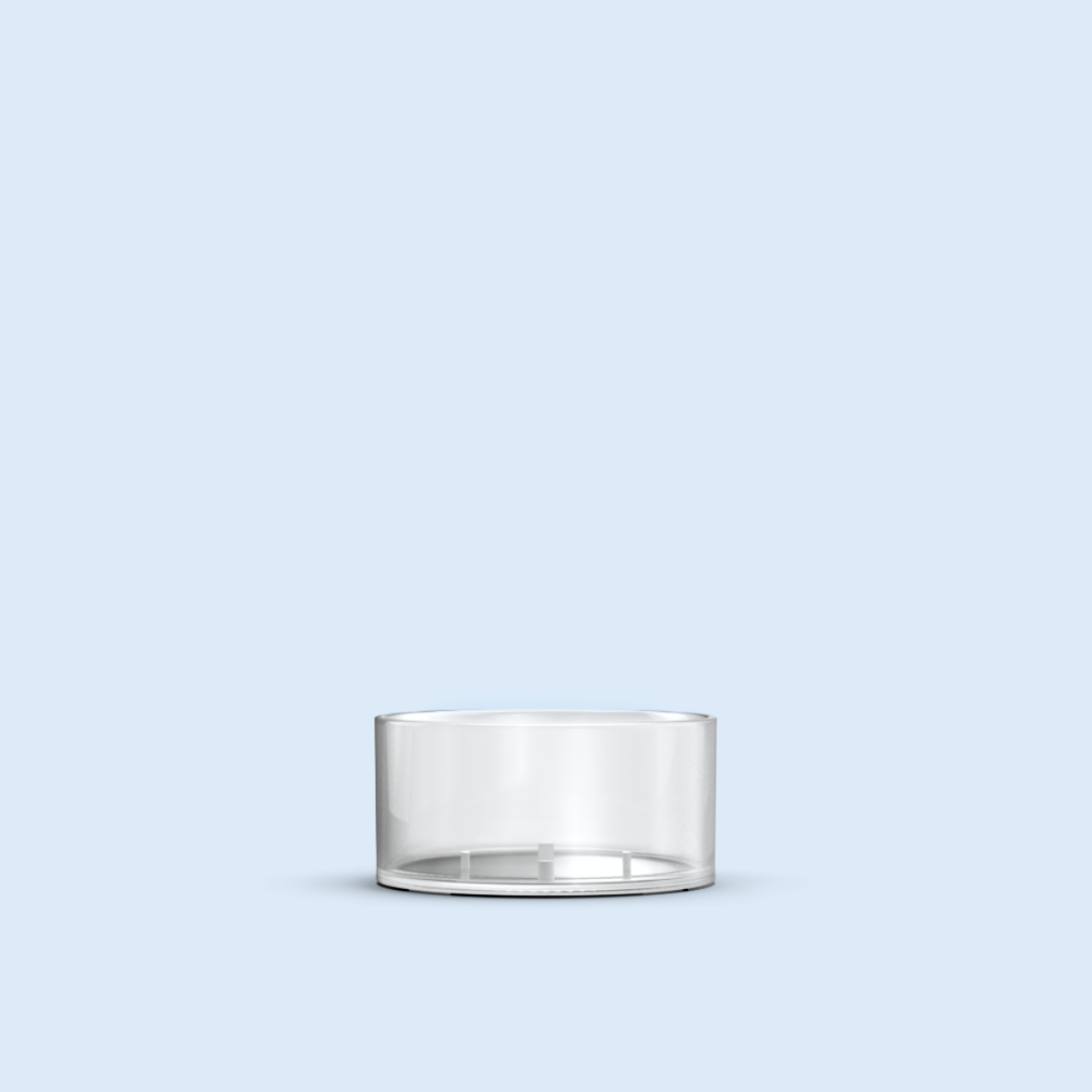The More You Know
Insights
Why Plastic is a Safe, Smart Choice for Candle Containers.

A Brief History of Plastics in Candle Manufacturing
Common Plastics Used for Candle Cups in the Past
PVC (Polyvinyl Chloride):
Used due to its affordability and formability.
Can release toxic fumes (like hydrogen chloride) when overheated.
Low flame resistance without additives.
Polystyrene (PS):
Clear and easy to mold.
Not heat-resistant. Can crack, deform, or ignite near open flame.
PET (Polyethylene Terephthalate):
Lightweight, recyclable.
Heat-distorts at ~70°C (158°F), making it unsuitable for direct flame exposure.
Acrylic (PMMA):
Great clarity, used in some novelty candles.
Flammable and not reliable under sustained heat.
Why Polycarbonate Changed the Game
High optical clarity
Excellent dimensional stability
Heat resistance exceeding 130°C (266°F)
It quickly became the go-to material for premium plastic candle containers, especially in Europe, where fire safety regulations led the charge for higher standards.
Key Benefits of Polycarbonate:
UL Yellow Card Listed (more on that below)
Flame resistance with favorable UL94 flammability ratings (typically V-2 or better)
Doesn’t shatter like glass or dent like aluminum
Can be molded into a variety of forms with a crystal-clear finish
Understanding UL Yellow Cards and Flammability Ratings
What is UL94?
UL94 is a flammability standard that classifies how materials behave when exposed to flame:
V-0: Stops burning within 10 seconds; no flaming drips
V-1: Stops burning within 30 seconds; limited flaming drips
V-2: Stops burning within 30 seconds; may drip flaming particles
Most polycarbonates used in candle applications achieve V-2 or better, meaning:
Flame extinguishes quickly
Material self-extinguishes when flame source is removed
Risk of ignition is minimized
When paired with good design and safe candle-making practices, a polycarbonate container is a very safe choice.
ASTM F2417-24: The Candle Fire Safety Standard
This critical standard, maintained by ASTM International, outlines performance and labeling requirements for candles to minimize fire hazards.
What It Covers:
Flame height
Secondary ignition
Container breakage
Tipping and stability
Excessive dripping, smoking, or flaring
As of the 2024 revision, the standard also includes more nuanced language around container heat resistance –a key point for injection-molded plastics. Complying with ASTM F2417-24 is essential for responsible candle design, and polycarbonate containers, when used properly, can meet or exceed these criteria. If you’d like to obtain a copy of the ASTM F2417-24 Standard Specification for Fire Safety for Candles, you can find it here.
Common Causes of Container Failure (Regardless of Material)
Even the best materials can fail under the wrong conditions. Here’s what to avoid in your candle system:
Over-Wicking:
A wick that’s too large generates excess heat.
Can push flame temps beyond the container’s limit (even glass will crack).
Fragrance Overloading:
Too much fragrance oil = more combustibles.
Can cause flare-ups, tunneling, or scorching.
Prolonged Burn Time:
Burning longer than manufacturer recommendations (e.g. 4+ hours at a time) builds excess heat in any container.
Wick Mushrooming:
Happens when carbon builds up at the tip of the wick, forming a little “mushroom cap.”
Results in an enlarged, unstable flame that throws off more heat than intended.
Can lead to container scorching, soot buildup, or even secondary ignition.
Often a sign that the wick size or wax composition needs to be adjusted.
User Error:
Burning on uneven surfaces, near curtains, or without supervision — no material can protect against bad habits.
Comparing Plastics to Traditional Materials
Let’s take a quick look at why plastic isn’t inherently more risky than its alternatives – in fact, it solves several issues:
Glass
Pros:
Clear, heat resistant.
Cons:
Can shatter or explode due to thermal shock or nickel sulfide inclusions.
Brittle if dropped or mishandled.
Hot to the touch during and after burning.
Heavy and expensive to ship.
Metal (Aluminum or Tin)
Pros:
Cheap, recyclable, good heat resistance.
Cons:
Hot to the touch during and after burning.
Limited design flexibility.
Susceptible to oxidation or corrosion if improperly coated.
Polycarbonate
Pros:
Lightweight and customizable.
Warm to the touch during burning.
High clarity and impact resistance.
Doesn’t shatter or corrode.
Flame-tested and UL-rated.
Cons:
Requires responsible formulation and design to ensure heat safety.
Not all polycarbonates are created equal—always choose tested, certified resins.
Final Thoughts: Safety by Design, Not by Assumption
The safest candle container isn’t glass, metal, or plastic – it’s the one that’s engineered properly, made from certified materials, and used correctly.
At Auralites, we use UL Yellow Card–listed polycarbonate resins, work within the parameters of ASTM standards, and collaborate with brands who prioritize safety. Whether you're designing a bespoke candle or a high-volume production line, we believe polycarbonate is a clear, safe, and sustainable option.
Have questions about material specs, flammability ratings, or custom mold designs? We’d love to chat, give us a call.






